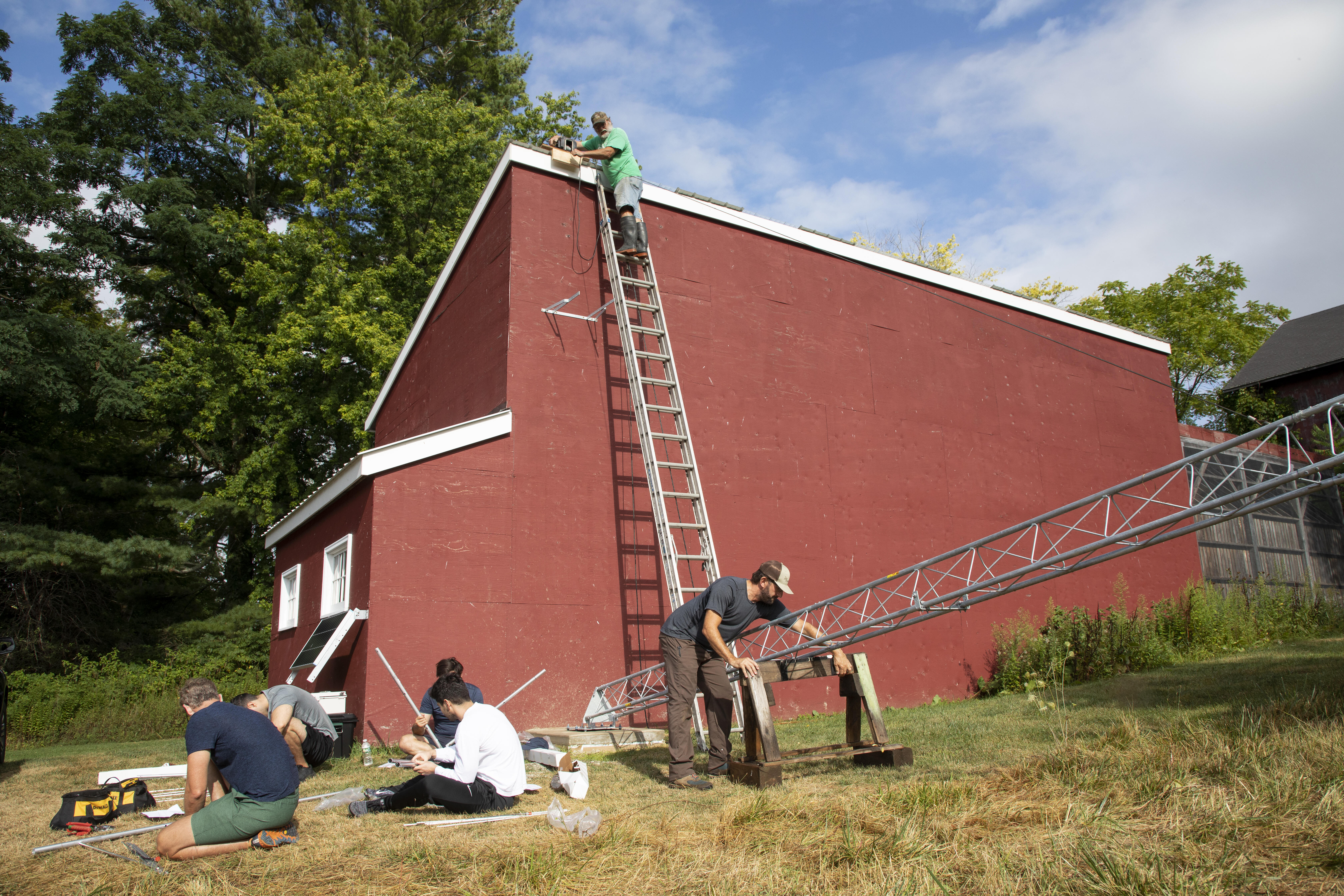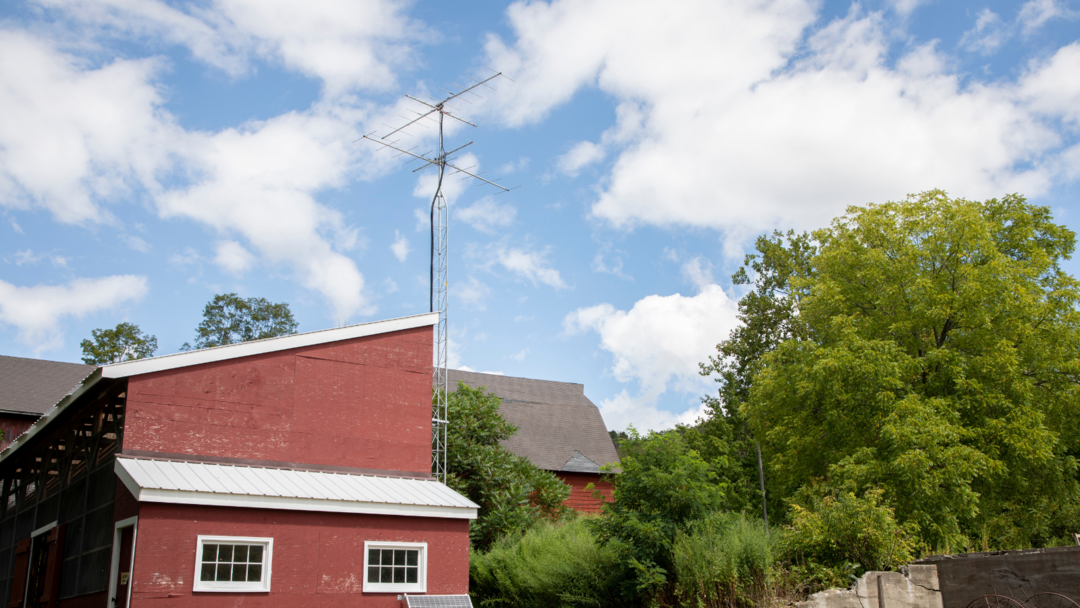SHARON, CT— Standing 34 feet high, the new Motus tower installed at the Sharon Audubon Center in Sharon, CT will help track migratory birds by picking up radio signals from any bird with a radio tag that flies within nine miles of the site. The tower will connect the Center’s important bird habitat to the global Motus network, increasing the network’s coverage of the northeastern American forest, where large numbers of migratory birds raise their young.
“Motus” means “movement” in Latin and refers to the network’s ability to track bird migrations from Canada south to Central America, South America, and the Caribbean.
Thanks to the help of the William T. Wharton Trust, Audubon’s own Migratory Bird Initiative team, and employees of Drake Real Estate Partners, the Sharon Audubon Center was able to purchase and install the tower this August. The work day was part of Drake Real Estate Partners’ commitment to 1% For The Planet, through which Drake has donated 1% of its annual revenues in support of environmental causes since 2016.
Watch the Motus tower go up and hear from Audubon experts!
Making Connections with Motus. Video: Diana Wilson/Audubon
"Having a Motus tower here at the Sharon Audubon Center is going to enable us to do what we've always done—track birds—only do it better,” said Eileen Fielding, center director at the Sharon Audubon Center. “We can better connect people to nature, connect people to Audubon's conservation work in northeastern forests especially, and connect with other people who are doing this work all along the migratory flyways of the birds we care about."

Motus is especially critical in studying smaller birds fitted with nanotags, which are tiny radio tracking devices often as light as an aspirin tablet. Nanotags provide an alternative to the heavier satellite radio transmitters researchers use to track movements of larger species such as hawks and owls.
When a radio tagged bird flies nearby, it sends a ping to the Motus tower’s antenna. Data from the nanotags are transmitted to ground-based receivers, rather than an orbiting satellite. The data is automatically uploaded to the internet, where anyone can view it.
Birds such as Wood Thrush and Cerulean Warbler rely on northeastern forests for habitat to raise their young in the spring and summer, but, like many forest-dependent birds, their numbers are in steady decline. Motus technology has the potential to track individual birds and reveal how they are using the forest habitat, or where they encounter difficulties.

"There's a lot that we still don't know about the billions of birds that migrate to and from Canada all the way to places as far as the Chiloé Archipelago, in Chile, or the Argentinian Pampa. That's why we're working to understand their movements, so we can do a better job taking care of the 'hotels and restaurants’ in forests and along our coasts, crucial places that birds need to survive on their long journeys," said Aurelio Ramos, senior vice president of Audubon Americas.
This new addition is one of fifteen Motus towers in the state of Connecticut, and among the thousands of Motus towers across the Western hemisphere. While each Motus station has a variable range, they can typically detect tags up to 10 miles away, so each new tower fills an important gap in migratory bird research. The tower at Sharon Audubon Center can detect birds tagged by other researchers and add to their data, thus contributing to bird migration research across the entire hemisphere.

North America has lost nearly 3 billion birds over the last several decades. The growing Motus network can help gather important data on the movement of birds, ultimately helping us better understand and protect them throughout their life cycles.
The data collected also supports Audubon’s Migratory Bird Initiative, which brings together tracking, banding, and eBird data across the Western Hemisphere to help improve conservation planning for imperiled birds.
“Audubon’s Migratory Bird Initiative is working with researchers across the hemisphere to develop a more complete picture of the places migratory birds need to thrive throughout their annual cycle,” said Bill DeLuca, migration ecologist with the National Audubon Society. “The Motus network plays a key role in not only filling in some of the gaps in the knowledge we have about migratory birds, but it also helps us tell the story of migration, connecting people to this amazing biological phenomenon.”








